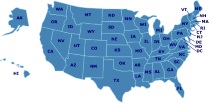E-Newsletters
Links
Eclectichomeschool E-Newsletter
This email newsletter is published by The Eclectic Homeschool Online to provide updates on the latest articles, resources, and suppport group information added to their website.
A+ Homeschooling
This email group benefits all types of homeschoolers, but especially Charlotte Mason, Ruth Beechick, eclectic, relaxed homeschoolers, notebookers, etc. As a member of this group you'll receive a bi-monthly newsletter of tips for nature notebooks, encouragement, living book reviews and experiences. This is not a discussion list, but a newsletter.
ABC Books by Ann
This group consists of two things: 1) a bi-weekly newsletter with articles about living books, book collecting, taking care of and organizing your home school library, using living books in your homeschool, notebooking, book and author reviews, and more; and 2.) a bi-weekly catalog of living books for sale on eBay, plus and some unit studies.
Teach Art at Home
A monthly newsletter that delivers free art projects and lessons that are contained on www.teachartathome.com - the home of Masterpiece Art Instruction. Join the group and be the first to receive the new projects every month along with drawing lessons and fun ideas for using art to teach other subjects such as history and science.
HS-4-LessNewsletter: The Best of Homeschooling On A Budget
This newsletter aims to help you provide your children with a high quality homeschooling education at the lowest possible cost.
amie network
The amie network is for Christian homeschooled teenage girls. Members of the amie network receive a monthly newsletter, have opportunities to meet and connect with other homeschooled teens, and receive support and encouragement.
Featured Resources
As an Amazon Associate, we earn from qualifying purchases. We get commissions for purchases made through links on this site.
Better Late Than Early: A New Approach to Your Child's Education
In this book, Raymond and Dorothy Moore look at the research behind learning styles for children. The message of slowing down and responding to your child's readiness is a welcome contrast to the common practice of pushing young children through the system. They conclude that the best environment for children to learn is at home.
And What About College?: How Homeschooling Can Lead to Admissions to the Best Colleges & Universities
Get all your questions about helping your homeschooled student apply and get accepted to college answered with this resource. It discusses transcripts, diplomas, education choices, online colleges, and more. If you are worried about whether your homeschooled student can have a successful college search, then this book will help allay those fears and offers good support and information.
Visual Brainstorms
Children who love word games, logic puzzles, secret codes, mazes, and math mysteries will stretch their mental muscles with Visual Brain Storms. This set of 100 cards, each of which includes a humorous, full-color drawing, promises "the world's best brainteaser questions." The characters in the questions often have funny names (Professor Pith Bugby pops up often) or faces or dilemmas to solve. The answers and explanations are on the back of each card, along with a related bonus question. Many of...
Safe Young Drivers: A Guide for Parents and Teens
Sixteen is by far the most dangerous age on the road. A 16-year-old is twelve times more likely than older drivers to die in a crash as a single occupant. Put two young teens in a vehicle, and the odds of death and injury nearly double. Despite these sobering facts, the procedure for obtaining a driver’s license in most states remains minimal. Commercial driving schools, even the most competent and conscientious among them, cannot possibly provide complete instruction. This book helps to address...
LeapPad Game - Mind Wars Jr. Interactive Game
Bring a friend and try this brand new way to play with your LeapPad! Race around the board in this fast-paced, wonderfully wacky game. Be the first to close all five windows and you will become the Mind Wars master and learn important 1st and 2nd grade skills in math, language arts, life science, physical science, and social studies!





